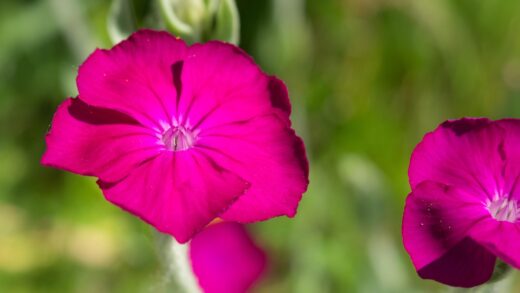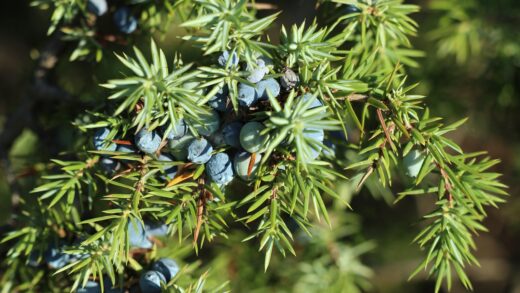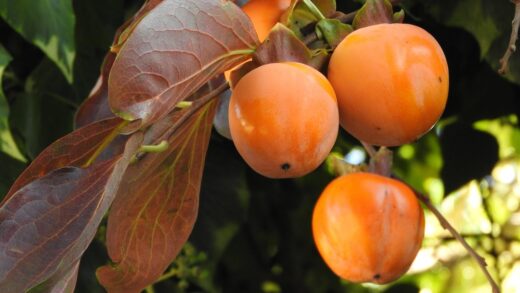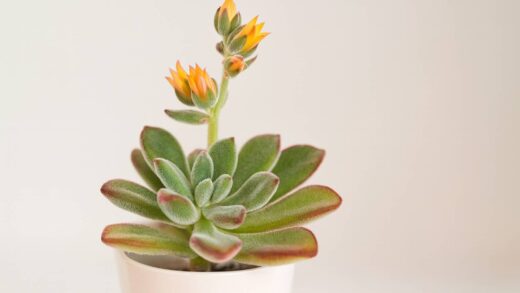Ensuring the survival of bellflowers through the winter months is a critical aspect of their cultivation, particularly for gardeners in climates that experience freezing temperatures. The ability of a bellflower to successfully overwinter depends on a combination of its innate hardiness and the specific care and protection it receives in the autumn. While many species are robust, hardy perennials that require minimal intervention, others, especially certain alpine varieties or those grown in containers, may need additional measures to protect them from the harsh conditions of winter. Proper preparation in the preceding months, from ceasing fertilization to ensuring good drainage, sets the stage for a healthy return in the spring. This chapter will outline the essential strategies for guiding bellflowers safely through their winter dormancy.
The first step in successful overwintering is understanding the hardiness of the specific bellflower species being grown. The term hardiness refers to a plant’s ability to withstand cold winter temperatures, and this is typically rated using a zonal system, such as the USDA Plant Hardiness Zone Map. It is crucial to select varieties that are rated as hardy for your specific climate zone. Many common border bellflowers, such as Campanula persicifolia and Campanula glomerata, are very hardy and can survive cold winters with little more than a reliable snow cover for insulation. In contrast, some of the more tender species may only be perennial in milder climates and may need to be treated as annuals or given significant protection elsewhere.
One of the most significant threats to bellflowers during the winter is not the cold itself, but rather the combination of cold and wet conditions. Most bellflower species are highly intolerant of “winter wet,” where their crowns and roots sit in cold, waterlogged soil for extended periods. This often leads to crown rot and root rot, from which the plant will not recover. Therefore, the single most important aspect of winter preparation is ensuring the planting site has excellent drainage. This is why amending heavy clay soils with organic matter and grit before planting is so vital. For particularly vulnerable alpine species, planting them in raised beds or rock gardens can provide the sharp drainage necessary for their winter survival.
As autumn approaches, it is important to adjust care practices to help the plants prepare for dormancy. Fertilization should be stopped by late summer, as this discourages the growth of new, tender shoots that would be easily damaged by the first frosts. This allows the existing growth to harden off and the plant to begin storing energy in its root system for the winter. Continue to water the plants as needed during dry autumn spells, as a well-hydrated plant is better able to withstand the desiccating effects of cold winter winds. However, as temperatures drop, the frequency of watering should be reduced to avoid creating overly wet soil conditions leading into winter.
After the first hard frost has killed the top growth, the question of whether to cut back the dead stems arises. For the most part, cutting the foliage of herbaceous bellflowers back to a few inches above the ground is good practice. This tidies the garden’s appearance and, more importantly, removes any dead plant material that could harbor fungal spores or provide a hiding place for pests over the winter. This simple act of sanitation can significantly reduce the potential for disease and pest problems in the following spring, giving the plants a clean and healthy start to the new growing season.
More articles on this topic
Preparing the garden bed for winter
Proper preparation of the garden bed in autumn is a key factor in ensuring the successful overwintering of bellflowers. A primary task is a final, thorough weeding of the area around the plants. Removing weeds in the autumn prevents them from competing for moisture and nutrients as the bellflowers are trying to store energy for the winter. More importantly, it eliminates the weeds’ ability to set seed, which would lead to a much larger weed problem in the spring. A clean bed also improves air circulation around the base of the plants, which can help to reduce the risk of fungal diseases taking hold in the cool, damp conditions of late autumn.
The application of a winter mulch is one of the most beneficial actions a gardener can take to protect their perennial bellflowers. However, the timing and type of mulch are crucial. The mulch should be applied after the ground has frozen, not before. Applying it too early, while the ground is still warm, can trap heat and moisture, potentially leading to crown rot, and it can also provide a cozy winter home for rodents that may then feed on the plant crowns. The purpose of a winter mulch is not to keep the ground warm, but rather to keep it frozen, insulating it from the temperature fluctuations of sunny winter days and preventing the damaging freeze-thaw cycles that can heave plants out of the ground.
Good materials for a winter mulch include shredded leaves, straw, pine boughs, or chopped corn stalks. These materials are light and airy, so they do not compact and become waterlogged, which could suffocate the plant’s crown. A layer of two to four inches is generally sufficient to provide the necessary insulation. This protective blanket helps to shield the dormant crowns from extreme cold and the drying effects of winter winds, especially in gardens that lack a reliable, insulating cover of snow. In the early spring, as the threat of hard frost passes, this mulch should be gradually raked away to allow the ground to warm up and to permit the new growth to emerge unimpeded.
For certain bellflower species, particularly the alpine types that are highly sensitive to winter wetness, additional protection may be warranted. These plants often benefit from having a layer of gravel or grit applied around their crowns. This helps to wick moisture away from the base of the plant, keeping the crown relatively dry even during periods of winter rain or snowmelt. In very wet climates, some gardeners even place a pane of glass or a cloche over particularly prized alpine specimens to shield them from excessive winter precipitation while still allowing for light penetration and air circulation.
More articles on this topic
Overwintering in containers
Bellflowers grown in containers face a much greater risk during the winter than those planted in the ground. The soil in a container is exposed to the cold air on all sides, meaning it will freeze much faster and more solidly than the insulated ground. This can easily freeze the entire root ball, which can be fatal to the plant. The roots of a plant are generally much less cold-hardy than its top growth, and a plant that is perfectly hardy in the garden may not survive the winter in an exposed pot. Therefore, container-grown bellflowers require specific and deliberate protective measures.
One of the most effective methods for protecting containerized bellflowers is to move the pot to a more sheltered location for the winter. An unheated garage, a cold frame, a shed, or a protected porch are all excellent options. The goal is to keep the plant dormant but to shield its roots from the most extreme temperature fluctuations and the coldest winds. The plant will not need light during its dormancy, but it will need to be checked periodically for moisture. The soil should not be allowed to dry out completely, but it should also not be kept wet. A very light watering once a month is usually sufficient to prevent dehydration.
If a sheltered location is not available, the container itself can be insulated. One way to do this is to group several pots together against a protected wall of the house, which reduces their exposure. The entire group of pots can then be surrounded with a thick layer of insulating material, such as bubble wrap, burlap bags filled with leaves, or straw bales. Another technique is the “pot-in-pot” method, where the container holding the bellflower is placed inside a larger container, and the space between the two pots is filled with an insulating material like wood chips, leaves, or sand.
For gardeners in colder climates with sufficient space, a simple and effective technique is to sink the entire pot into an empty garden bed for the winter. The surrounding soil will provide excellent insulation for the root ball, just as it does for plants growing in the ground. Dig a hole large enough to accommodate the pot, place it inside so that the rim is level with the soil surface, and then backfill with soil. A layer of mulch can then be applied over the top for additional protection. In the spring, after the ground has thawed, the pot can be lifted out, cleaned, and returned to its summer location.
Species-specific winter care
The specific overwintering strategy for bellflowers can vary depending on the type and origin of the plant. The robust, herbaceous border perennials like Campanula lactiflora (milky bellflower) and Campanula latifolia (great bellflower) are generally very hardy and require minimal winter care once established. For these varieties, simply cutting back the dead foliage in late autumn and ensuring the soil has good drainage is usually all that is required. A winter mulch is beneficial, particularly for younger plants or in colder zones, but mature clumps are often self-sufficient, especially when provided with the natural insulation of snow cover.
Alpine bellflowers, originating from mountainous regions, present a different set of requirements. While they are inherently very cold-hardy, they are also adapted to environments with perfect drainage and a protective winter blanket of snow. In garden settings, their primary enemy is winter wetness. For species like Campanula cochleariifolia or Campanula carpatica, it is crucial to plant them in gritty, fast-draining soil, such as in a rock garden or a raised bed. Applying a top dressing of fine gravel or stone chips around the collar of the plant can help to keep the crown dry and prevent rot. Protecting them from excessive rain with a pane of glass can be necessary in milder but wetter climates.
Biennial species, such as Campanula medium (Canterbury bells), have a specific life cycle that influences their winter care. These plants spend their first year as a rosette of leaves and then flower, set seed, and die in their second year. The first-year rosettes must successfully overwinter to be able to flower the following season. They are generally quite hardy, but good drainage is, once again, essential to prevent the crown from rotting during the winter. A light mulch of shredded leaves can provide some protection, but care should be taken not to cover the crown too deeply, as this can trap moisture and lead to decay.
Some bellflower species, particularly those originating from warmer, Mediterranean climates, may be tender and not reliably hardy in colder regions. Campanula isophylla, often grown as a trailing plant in hanging baskets, is a prime example. This species is not frost-hardy and cannot survive a freezing winter outdoors. In colder climates, it must be treated as an annual or brought indoors to be overwintered as a houseplant. It should be placed in a bright, cool location and watered sparingly throughout the winter months until it can be moved back outdoors in the spring after all danger of frost has passed.


















